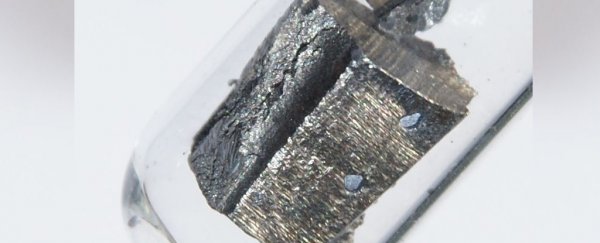Rare earth elements are essential for building everything from smartphones to solar power plants, but extracting them from the ground comes with a high cost in terms of expense, effort, and environmental impact. That could be about to change.
Researchers have discovered a new way to get some of these elements out of phosphate rock waste (or phosphogypsum) in what could be a huge boost for clean energy development.
The trick is using organic acids produced by bacteria to do the hard work of extracting rare earth elements (REEs) from phosphogypsum. The researchers tried a number of bio-acid mixtures of mineral and organic acids to extract six REEs – yttrium, cerium, neodymium, samarium, europium and ytterbium.
The phosphate rock waste they were working with is watery at first, and forms a crust as it dries. In these experiments the researchers were primarily using gluconic acid, found naturally in fruits and honey, to tease out the rare earth elements trapped in the waste.
The team hopes the method could be scaled up, which could mean less of a reliance on REE mining, and on the harsh, toxic chemicals usually deployed to extract the elements from metal ores.
This new study only looked at synthetic phosphogypsum produced in the lab, so the next challenge is to see if it works on waste actually produced by the industry, generated in the production of phosphoric acid for fertilisers.
The good news is there's a lot of it – about 100,000 tons of these REEs end up in phosphate rock waste every year. Even though the elements only make up about 0.1 percent of phosphate rock, the amount of waste produced means the annual production of rare earth oxides could be almost doubled, in theory.
REEs are actually quite plentiful in Earth's crust, despite the "rare" in the name - but they're widely dispersed and difficult to get out, both practically and economically. China is currently in charge of 90 percent of REE production, but other countries are looking to pick up the slack.
With that in mind, this isn't the only method scientists are looking at to try and boost production of REEs. We've also seen studies looking at how elements could be produced from coal waste, through a chemical process known as ion exchange.
In that case a special solution is used to separate REEs from coal. It's another process that's less intensive in terms of energy demands and kinder towards the environment than what we rely on today.
If we are to keep on buying new smartphones, exploring renewable energy technologies, and building electric cars, then a steady supply of REEs is going to be crucial. Let's hope this new research makes that supply easier to get, and more sustainably, too.
The research has been published in the Journal of Chemical Thermodynamics.
